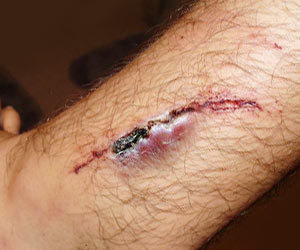
‘Early lactate measurements may improve survival in septic patients. Septic patients who develop high lactate levels may benefit from specific treatments, such as antibiotics.’
Tweet it Now
These recommendations, the Severe Sepsis and Septic Shock Early Management Bundle (SEP-1), require hospitals to complete three interventions within a few hours of the onset of sepsis. Two of the three requirements were well established: obtain blood cultures and administer early IV antibiotics.But many physicians were skeptical about the evidence for the third required action--measuring lactate levels in the blood somewhere between six hours before and three hours after evidence of sepsis. One systematic review of the SEP-1 bundle, for example, concluded that "no credible evidence supports a beneficial effect on survival of mandated use [of lactate levels] for all septic patients." Editorials by several sepsis experts argued that the serial lactate measurements and fluid infusions required by SEP-1 "may not benefit septic patients and may sometimes be harmful."
Once these lactate measurements were mandated, "we felt that the potential impact of this recommendation on our patients deserved a closer look," said Matthew Churpek, MD, MPH, PhD, assistant professor of medicine at the University of Chicago and senior author of a new study: "Implications of CMS SEP-1 and initial lactate measurement on the management of sepsis," published in CHEST.
The study by Churpek and colleagues was designed to evaluate both the frequency of urgent lactate measurements and their association with clinician interventions and mortality. An elevated lactate level means that a patient's cells are not getting enough oxygen, sometimes as a result of inadequate blood flow.
Septic patients who develop high lactate levels would benefit from urgent therapies, such as antibiotics, the study authors agreed. But they worried that the SEP-1 bundle could greatly increase the number of lactates checked on patients and that the association between delays in initial lactate measurement and mortality "had not been adequately examined," Churpek said.
Advertisement
So the research team decided to look back at thousands of sepsis cases diagnosed and cared for at the hospital. They combed through medical records from October 2008 to January 2016 looking for cases of sepsis treated in the seven years prior to SEP-1. Their goal was to determine whether early lactate measurements were associated with improved patient survival. Did patients who received early lactate measurements, they wondered, also receive intravenous fluids and antibiotics earlier than their counterparts?
Advertisement
Forty-seven percent of these patients (2,697) entered the hospital through the emergency room, 27 percent (1,575) developed sepsis in an intensive care unit, and 26 percent (1,490) were cared for on the wards.
Next, they looked for differences between sepsis patients who met a key SEP-1 criterion--timely serum lactate levels during the designated time frame--and those who did not. Overall, 60 percent of patients had initial lactate draw within the specified time window. Forty-one percent of those patients had normal lactate levels, defined as less than or equal to 2 millimoles per liter. The other 40 percent of patients did not have their lactates measured during the time window established by SEP-1.
Patients who presented with severe sepsis in the emergency department were most likely to receive a timely lactate test; 79 percent of emergency room patients were tested within the recommended time frame. These patients had the lowest mortality (18%) of any group of sepsis-related patients.
Meanwhile, patients on the wards who developed severe sepsis had the lowest rate of timely lactate measurements; only 32 percent were tested within the recommended time. Many patients who did not receive timely lactate measurements also experienced delayed IV-fluid administration and antibiotic treatment--one of the few well-tested interventions that improve survival in sepsis.
"There was an associated increase in mortality, about two percent for each hour of delay, in patients with an abnormal lactate value," Churpek said. "It took nearly twice as long for those patients to receive antibiotics, and more than three times as long for them to receive needed fluids, compared to patients who had lactates drawn within the SEP-1 window."
"Our results suggest that abnormal lactate values likely prompt rapid interventions, such as antibiotic therapy, leading to better outcomes for patients with sepsis," he said. Although SEP-1 has been controversial, "our study adds weight to the belief that systematic early lactate measurements in appropriate patients can make a big difference," Churpek said.
Source-Eurekalert









